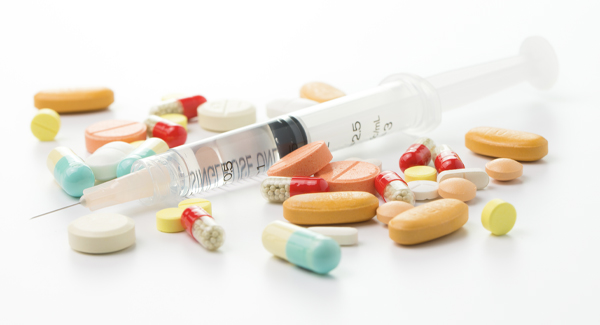Building a Comprehensive Treatment Plan for PsA
Managing psoriatic arthritis (PsA) requires a comprehensive treatment plan that includes, medications, a healthy diet, complementary therapies, physical activity and a strong support network.
Building a Comprehensive Treatment Plan for PsA
There’s no “one size fits all” treatment approach for psoriatic arthritis (PsA). What works for some may not work for others. That’s why shared decision making, or prioritizing treatment goals with your doctor, is so important. Luckily, there are many ways to help you feel your best. Use these tips to build a comprehensive treatment plan, but always discuss changes with your doctor first.
Recruit the Right Medical Professionals
PsA can affect more than the skin and joints. In addition to a rheumatologist, you may need other specialists, such as a dermatologist for skin symptoms; a cardiologist or ophthalmologist for heart or eye complications; and a mental health professional to help with emotional challenges. Physical and occupational therapists can teach strategies to protect your joints and make daily life easier.
Make the Most Out of Medication
Some people may only need one medication; others may need more than one or a combo of pills, creams and light therapy for skin and joint issues. Discuss top concerns with your doctor. Do skin or nail symptoms bother you the most? Do you have mostly joint pain and only the occasional psoriatic flare? Is back pain your biggest issue? This helps your doctor prescribe the right treatment for you.
Keep Track
Keeping thorough medical records can help you and your health care team better manage your condition. Consider keeping information (test results, procedures, medications) in one place with a personal health record (PHR) app. Tracking symptoms can help you and your doctor evaluate the effectiveness of your treatment plan. It will also help you better report highs and lows during appointments.
Develop a Skin Care Routine
Short, warm (not hot) baths with colloidal oatmeal, oil, Dead Sea or Epsom salts and lotions containing aloe vera, capsaicin or pyrithione zinc can help. Don’t soak for too long – it can make psoriasis worse. Wear dry, breathable fabrics and avoid artificial fragrances. Light therapy (phototherapy), or the use of natural or artificial UV light, can also help control psoriasis patches.
Find Something That Moves You
Exercise reduces inflammation, strengthens muscles to support painful joints, increases energy and improves functioning. Swimming, cycling and walking are great low-impact options, as well as tai chi and yoga, which also boast mental health benefits. During psoriasis flares, avoid the pool; chlorine can irritate the skin. Before starting a new workout, check with your doctor to ensure it’s safe.
Stress Less
Stress impacts the immune system, which can trigger flares and exacerbate pain. Exercise, deep breathing, meditation and cognitive behavioral therapy (which helps change negative thought patterns) can help relieve stress, anxiety, depression and improve pain response. If you notice a change in your mood, sleep or interest in favorite activities, it may be time to see a mental health professional.
Follow a Whole Foods Diet
There’s no “PsA diet,” but eating healthy– and not overeating – can help manage disease activity. Doing so can also help you lose or maintain a healthy weight; excess body fat fuels inflammation. A diet that focuses on fruits, vegetables, lean protein and healthy fats (fatty fish, nuts, avocados), and limits sugar and processed foods, like the Mediterranean Diet, can help quiet inflammation.
Do Some Sole Searching
Foot problems, such as swollen toes, toenail infections and plantar fasciitis (inflammation of a ligament on the sole of the foot) can impede activity and worsen symptoms. Choose comfortable shoes made of natural, moisture-wicking materials, and avoid heels or pointy shoes. Orthotics and shoe inserts can offer extra support and relief. For sore feet, use a small foam roller to work out any kinks.
Try Complementary Therapies for Symptom Relief
Controlling disease activity requires medication, but some nondrug therapies can help manage symptoms, including hot and cold therapies, topical treatments, meditation, massage, exercise, physical therapy and acupuncture. Fish oil, ginger, vitamin D, selenium and B12 supplements may also help. Always tell your doctor before trying a new therapy or supplement to avoid risky side effects.
Ditch Harmful Vices
Smoking is a big no-no in general, but it can make PsA symptoms worse and even interfere with the effectiveness of medications. Likewise, drinking too much alcohol can interfere with medications and increase side effects of some drugs. Before imbibing, ask your doctor if and how much alcohol is safe. Your doctor can also recommend ways to help you ditch cigarettes for good.
Combat Fatigue and Pain with Sleep
Poor sleep can weaken the immune system, increase pain perception and cause chronic fatigue. Practicing good sleep hygiene (shutting off electronics at least an hour before bedtime and having a relaxing routine) and exercising can help with sleep quality. Some medications may interfere with sleep quality, too. Tell your doctor if pain or other symptoms make it harder for you to drift off.
Find a Support System
Sometimes connection is the best medicine. The Live Yes! Arthritis community connects you to people who truly understand what you’re going through and provides support and information through virtual and in-person support groups and other programs. To learn more about the network and how to register, visit connectgroups.arthritis.org.
Diagnosed With Psoriatic Arthritis?
Get the latest news and tips about living with Psoriatic Arthritis in the Living Your Yes! e-newsletter.



